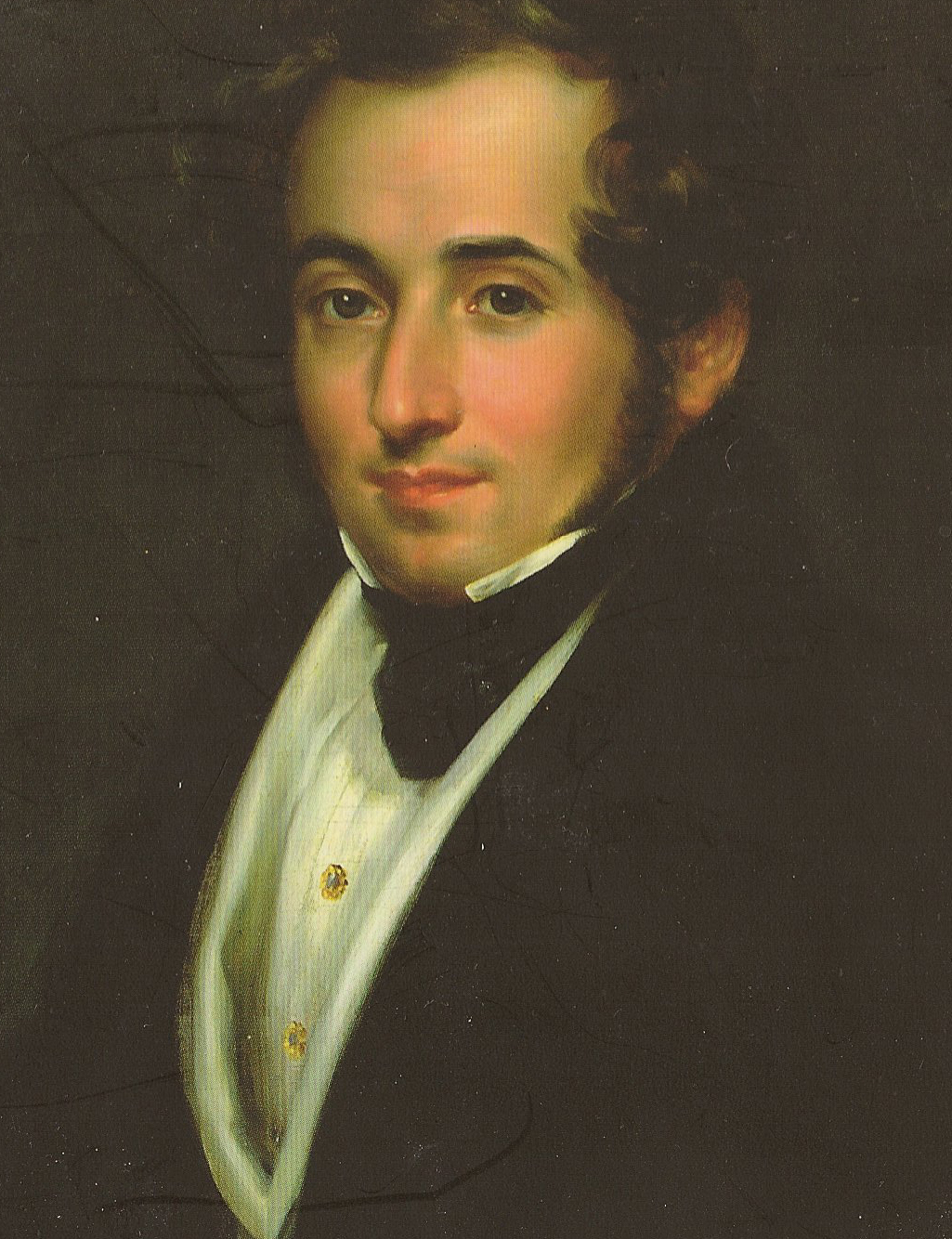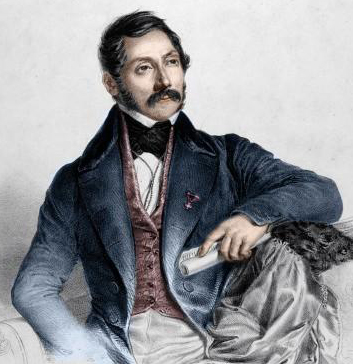|
Théâtre D'Orléans
The Théâtre d'Orléans (English: Orleans Theatre) was the most important opera house in New Orleans in the first half of the 19th century. The company performed in French and gave the American premieres of many French operas. It was located on Orleans Street between Royal and Bourbon. The plans for the theatre were drawn up by Louis Tabary, a refugee from the French colony of Saint-Domingue (Haiti). Construction began in 1806, but the opening was delayed until October 1815 (after the War of 1812). After a fire, it was rebuilt (with the adjacent Orleans Ballroom) and reopened in 1819, led by another émigré from Saint-Domingue, John Davis. Davis became one of the major figures in French theatre in New Orleans. The theatre was destroyed by fire in 1866,Belsom 2007.Joyce & McPeek 2001. but the ballroom is still used. History of the theatre 1819–1837: John Davis In the first five seasons under the leadership of Davis, the Théâtre d'Orléans presented 140 operas, including 5 ... [...More Info...] [...Related Items...] OR: [Wikipedia] [Google] [Baidu] |
English Language
English is a West Germanic language of the Indo-European language family, with its earliest forms spoken by the inhabitants of early medieval England. It is named after the Angles, one of the ancient Germanic peoples that migrated to the island of Great Britain. Existing on a dialect continuum with Scots, and then closest related to the Low Saxon and Frisian languages, English is genealogically West Germanic. However, its vocabulary is also distinctively influenced by dialects of France (about 29% of Modern English words) and Latin (also about 29%), plus some grammar and a small amount of core vocabulary influenced by Old Norse (a North Germanic language). Speakers of English are called Anglophones. The earliest forms of English, collectively known as Old English, evolved from a group of West Germanic ( Ingvaeonic) dialects brought to Great Britain by Anglo-Saxon settlers in the 5th century and further mutated by Norse-speaking Viking settlers starting in ... [...More Info...] [...Related Items...] OR: [Wikipedia] [Google] [Baidu] |
Lucia Di Lammermoor
''Lucia di Lammermoor'' () is a (tragic opera) in three acts by Italian composer Gaetano Donizetti. Salvadore Cammarano wrote the Italian-language libretto loosely based upon Sir Walter Scott's 1819 historical novel '' The Bride of Lammermoor''. Donizetti wrote ''Lucia di Lammermoor'' in 1835, when he was reaching the peak of his reputation as an opera composer. Gioachino Rossini had recently retired and Vincenzo Bellini had died shortly before the premiere of ''Lucia'' leaving Donizetti as "the sole reigning genius of Italian opera".Mackerras, p. 29 Not only were conditions ripe for Donizetti's success as a composer, but there was also a widespread interest in the history and culture of Scotland. The perceived romance of its violent wars and feuds, as well as its folklore and mythology, intrigued 19th century readers and audiences. Sir Walter Scott dramatized these elements in his novel ''The Bride of Lammermoor'', which inspired several musical works including ''Lucia''.Macker ... [...More Info...] [...Related Items...] OR: [Wikipedia] [Google] [Baidu] |
Julie Calvé
Julie may refer to: * Julie (given name), a list of people and fictional characters with the name Film and television * ''Julie'' (1956 film), an American film noir starring Doris Day * ''Julie'' (1975 film), a Hindi film by K. S. Sethumadhavan featuring Lakshmi * ''Julie'' (1998 film), a British public information film about seatbelt use * ''Julie'' (2004 film), a Hindi film starring Neha Dhupia * ''Julie'' (2006 film), a Kannada film starring Ramya * ''Julie'' (TV series), a 1992 American sitcom starring Julie Andrews Literature * ''Julie; or, The New Heloise'', a 1761 novel by Jean-Jacques Rousseau * ''Julie'' (George novel), a 1994 novel, the second book of a trilogy, by Jean Craighead George * ''Julie'', a 1985 novel by Cora Taylor Music * ''Julie'' (opera), a 2005 opera by Philippe Boesmans Albums * ''Julie'' (album), by Julie London, 1957 * ''Julie'' (EP) or the title song, by Jens Lekman, 2004 Songs * "Julie", by Doris Day, 1956 * "Julie" (Daniel song), by ... [...More Info...] [...Related Items...] OR: [Wikipedia] [Google] [Baidu] |
Parisina (Donizetti)
''Parisina'' (also known as ''Parisina d'Este'') is an opera (''tragedia lirica''), in three acts by Gaetano Donizetti. Felice Romani wrote the Italian libretto after Byron's 1816 poem '' Parisina''. The characters of Parisina and Duke Azzo in both Byron's poem and Donizetti's opera are very loosely based on the historical figures of Parisina Malatesta (the daughter of Andrea Malatesta) and Niccolò III d'Este. ''Parisina'' premiered on 17 March 1833 at the Teatro della Pergola in Florence. A performance at the Teatro Argentina in Rome is the setting for a key scene in chapter 34 of the 1844 novel ''The Count of Monte Cristo'' by Alexandre Dumas. Roles Synopsis :Place: Ferrara :Time: the 15th century''This synopsis is translated froParisina d'Este(version of 30 December 2008), on the Italian Wikipedia Act 1 In Duke Azzo's palace, Ernesto and other nobles await his arrival (''È desto il duca?''). Azzo appears and tells Ernesto about his fear that his wife, Parisin ... [...More Info...] [...Related Items...] OR: [Wikipedia] [Google] [Baidu] |
Donizetti
Domenico Gaetano Maria Donizetti (29 November 1797 – 8 April 1848) was an Italian composer, best known for his almost 70 operas. Along with Gioachino Rossini and Vincenzo Bellini, he was a leading composer of the ''bel canto'' opera style during the first half of the nineteenth century and a probable influence on other composers such as Giuseppe Verdi. Donizetti was born in Bergamo in Lombardy. At an early age he was taken up by Simon Mayr who enrolled him with a full scholarship in a school which he had set up. There he received detailed musical training. Mayr was instrumental in obtaining a place for Donizetti at the Bologna Academy, where, at the age of 19, he wrote his first one-act opera, the comedy '' Il Pigmalione'', which may never have been performed during his lifetime. An offer in 1822 from Domenico Barbaja, the impresario of the Teatro di San Carlo in Naples, which followed the composer's ninth opera, led to his move to Naples and his residency there until produc ... [...More Info...] [...Related Items...] OR: [Wikipedia] [Google] [Baidu] |
Semiramide
''Semiramide'' () is an opera in two acts by Gioachino Rossini. The libretto by Gaetano Rossi is based on Voltaire's tragedy ''Semiramis'', which in turn was based on the legend of Semiramis of Assyria. The opera was first performed at La Fenice in Venice on 3 February 1823. ''Semiramide'' was Rossini's final Italian opera and according to Richard Osborne, "could well be dubbed ''Tancredi Revisited''". As in '' Tancredi'', Rossi's libretto was based on a Voltaire tragedy. The music took the form of a return to vocal traditions of Rossini's youth, and was a melodrama in which he "recreated the baroque tradition of decorative singing with unparalleled skill". The ensemble-scenes (particularly the duos between Arsace and Semiramide) and choruses are of a high order, as is the orchestral writing, which makes full use of a large pit. After this splendid work, one of his finest in the genre, Rossini turned his back on Italy and moved to Paris. Apart from '' Il viaggio a Reims'', whic ... [...More Info...] [...Related Items...] OR: [Wikipedia] [Google] [Baidu] |
Rossini
Gioachino Antonio Rossini (29 February 1792 – 13 November 1868) was an Italian composer who gained fame for his 39 operas, although he also wrote many songs, some chamber music and piano pieces, and some sacred music. He set new standards for both comic and serious opera before retiring from large-scale composition while still in his thirties, at the height of his popularity. Born in Pesaro to parents who were both musicians (his father a trumpeter, his mother a singer), Rossini began to compose by the age of 12 and was educated at music school in Bologna. His first opera was performed in Venice in 1810 when he was 18 years old. In 1815 he was engaged to write operas and manage theatres in Naples. In the period 1810–1823 he wrote 34 operas for the Italian stage that were performed in Venice, Milan, Ferrara, Naples and elsewhere; this productivity necessitated an almost formulaic approach for some components (such as overtures) and a certain amount of self-borrowing. Durin ... [...More Info...] [...Related Items...] OR: [Wikipedia] [Google] [Baidu] |
I Capuleti E I Montecchi
''I Capuleti e i Montecchi'' (''The Capulets and the Montagues'') is an Italian language, Italian opera (''Tragedia lirica'') in two acts by Vincenzo Bellini. The libretto by Felice Romani was a reworking of the story of ''Romeo and Juliet'' for an opera by Nicola Vaccai called ''Giulietta e Romeo (Vaccai), Giulietta e Romeo'' and based on the play of the same name by Luigi Scevola written in 1818, thus an Italian source rather than taken directly from William Shakespeare. Bellini was persuaded to write the opera for the 1830 Carnival of Venice, Carnival season at the Teatro La Fenice in Venice, with only a month and a half available for composition. He succeeded by appropriating a large amount of music previously written for his unsuccessful opera ''Zaira (opera), Zaira''. The first performance of ''I Capuleti e i Montecchi'' took place on 11 March 1830. Composition history After ''Zaira'' Following the poor reception which ''Zaira'' received in Parma, Bellini returned to M ... [...More Info...] [...Related Items...] OR: [Wikipedia] [Google] [Baidu] |
Beatrice Di Tenda
''Beatrice di Tenda'' is a tragic opera in two acts by Vincenzo Bellini, from a libretto by Felice Romani, after the play of the same name by . Initially, a play by Alexandre Dumas was chosen as the subject for the opera, but Bellini had reservations about its suitability. After he and Giuditta Pasta (for whom the opera was to be written) had together seen the ballet based on the very different play, Tedaldi-Fores' ''Beatrice Tenda'', in Milan in October 1832, she became enthusiastic about the subject and the composer set about persuading Romani that this was a good idea. Romani, who had his own concerns, the principal one being the close parallels with the story told in Donizetti's ''Anna Bolena'', an opera which had established that composer's success in 1830. Against his better judgment, he finally agreed, although he failed to provide verses for many months. Although unsuccessful at its premiere in Venice in 1833, Bellini felt that he had counteracted the horror of its sto ... [...More Info...] [...Related Items...] OR: [Wikipedia] [Google] [Baidu] |
Norma (opera)
''Norma'' () is a ''tragedia lirica'' or opera in two acts by Vincenzo Bellini with libretto by Felice Romani after the play ''Norma, ou L'infanticide'' (''Norma, or The Infanticide'') by Alexandre Soumet. It was first produced at La Scala in Milan on 26 December 1831. The opera is regarded as a leading example of the bel canto genre, and the soprano prayer "Casta diva" in act 1 is a famous piece. Among the well known singers of Norma of the first half of the 20th century was Rosa Ponselle who played the role in New York and London. Notable exponents of the title role in the post-war period have been Maria Callas, Leyla Gencer, Joan Sutherland, and Montserrat Caballé. Composition history Crivelli and Company were managing both La Scala and La Fenice in Venice, and as a result, in April–May 1830 Bellini was able to negotiate a contract with them for two operas, one at each theatre. The opera for December 1831 at La Scala became ''Norma'', while the one for the 1832 C ... [...More Info...] [...Related Items...] OR: [Wikipedia] [Google] [Baidu] |






